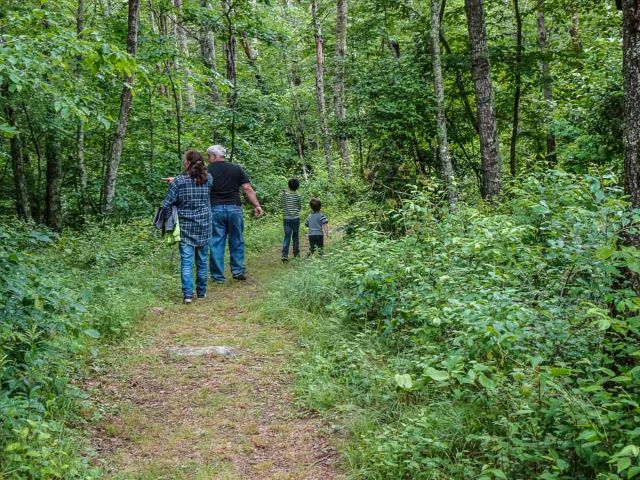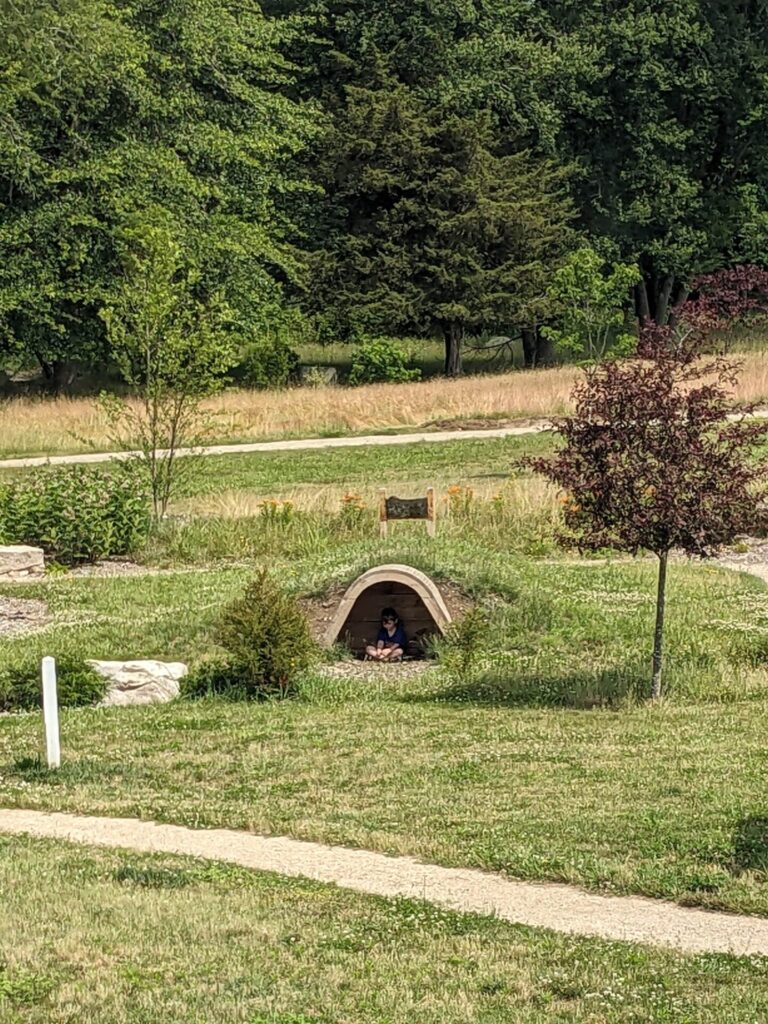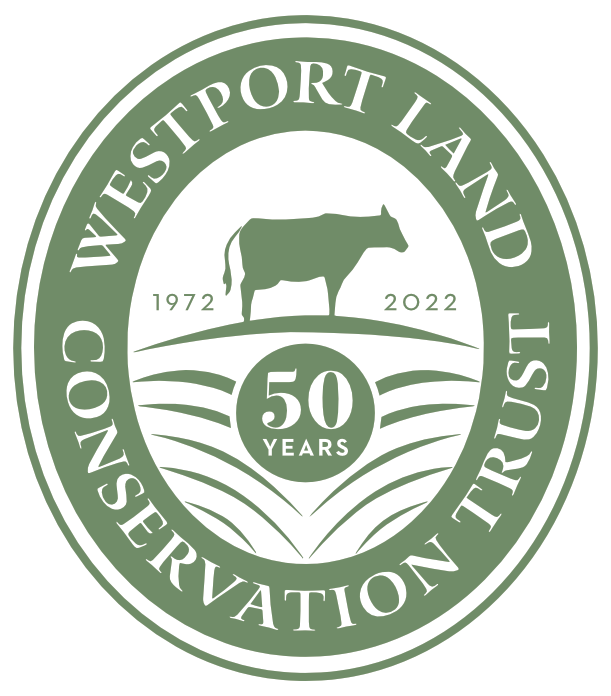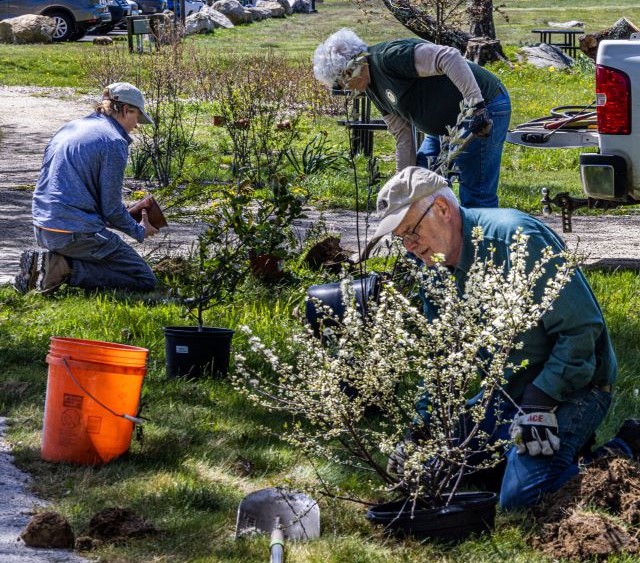
Westport Woods, the former St. Vincent de Paul Camp, has undergone massive transformations since it was purchased by the Westport Land Conservation Trust nearly 7 years ago. As WLCT planned the move from Town Farm on Drift Road, we dreamed of a “large conservation park” on the acres being cleared at Westport Woods. A Conservation Park would open up opportunities to create trails, with space for exploration, recreation, outdoor education, and an indoor learning center. This vision has been executed with the support from our generous community and key volunteers.
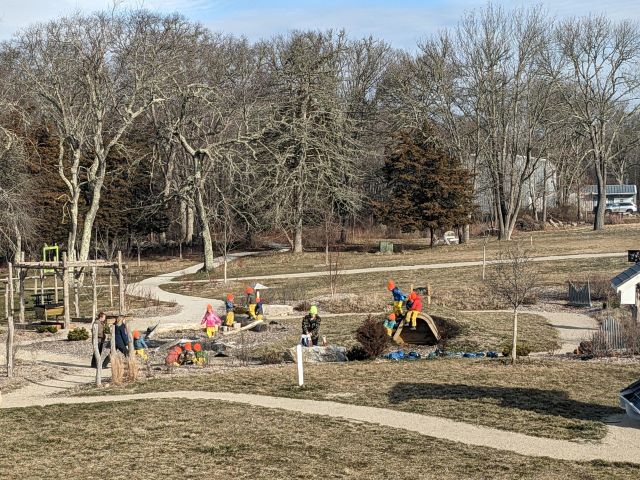
An Evolving Vision
In 2024 we plan to install a large education and display garden surrounding the Learning Center that will inspire onsite education and showcase ideas for homeowners. The garden will encompass the office building and pathway leading to the building from the parking lot.
We’re creating a few distinct garden areas, all of them featuring a variety of native plants, including cultivars, that will address form, function and ecology. We plan to have a great variety of trees, shrubs, and perennials that are appropriate for sun, part-sun, and shade. Like our Discovery Garden, plants will be labeled and found at local nurseries. Our hope is that visitors will get inspired to learn about plants’ roles in our larger ecosystems and relationship to wildlife, by connecting the functional ecology to the fun and beauty of home-based horticulture.
Phase One
Our first step is to plant the largest trees and shrubs while mulching our perennial beds. Below are steps and tips for spring planting of trees/shrubs and lasagna mulching.
Early spring is a great time to plant trees, as deciduous material hasn’t leafed out yet and the rain is plenty. There are a few things to be on the look for so that mother nature doesn’t foil us!
- When selecting deciduous trees or shrubs, check for tight, plump buds.
- Scratch a small branch to look for green if it hasn’t leafed out yet. These weird winters have been scorching buds on various things, especially if the plant material arrives from southern nurseries too early. It’s getting warmer earlier down south too and nurseries attempt to ship their plants earlier to New England. However, we are still susceptible to cold snaps so knowing your nursery sources is always good.
- Check the roots of plants in pots. Extraordinary growth from the bottom of the pot is one indication of pot-bound roots. If those roots are slimy, the stems are mushy or the soil smells rotten, there might be root rot. Once again, warmer and wetter winters may cause plant growth which can create encircling roots or pot-bound roots and even sitting in water too long will cause root rot.
Lasagna Mulching: This technique gets its name from the layering of a biodegradable product like jute or certain types of cardboard over the turf you want to convert. Mark out your bed perimeter and lay down a double layer of bridgeable material. Dump either compost or woodchip on top at about 6”-8”. It takes some time, but the weeds and grass will get snuffed out from the layering and the heat generated from the top material. You can expect that within 6-12 months and with NO TILLING OR CHEMICALS, your area is ready for planting.
Tips
- Container trees and shrubs tend to be easier all around. They often allow for a greater ability to rough up the roots with your hands or small soil knife, but don’t plant too low! We like to plant a few inches above the soil line to account for settling and bedding mulch.
- Adding compost and organic fertilizer to your hole when planting is never a bad idea and will help create or inoculate the rhizosphere of each plant with a healthy soil microbiome.
- Water a lot at planting!! Your plant may get shocked after removing it from the nursery and roughing up the roots. A slow soak with a hose or sprinkler is best.
- For B&B Trees and Shrubs always identify and excavate the root flare. This is located at the base of the trunk and it is crucial it is exposed in order for the tree to survive long term. Let the plant breath!
- Always remove the cage and burlap from B&B Trees. It is a pain, but it is proven the trees will die within about 15 years if the cage is not removed due to encircling roots and the flare complications.
- Prune any damaged or encircling roots to encourage a flush of new fibrous roots
- Stake large trees and shrubs when needed to help provide a stable start as root growth initiates.
We’re looking forward to a long planting and growing season in 2024. Please stop by Westport Woods and take note of the gardens, old and new, as they evolve!
